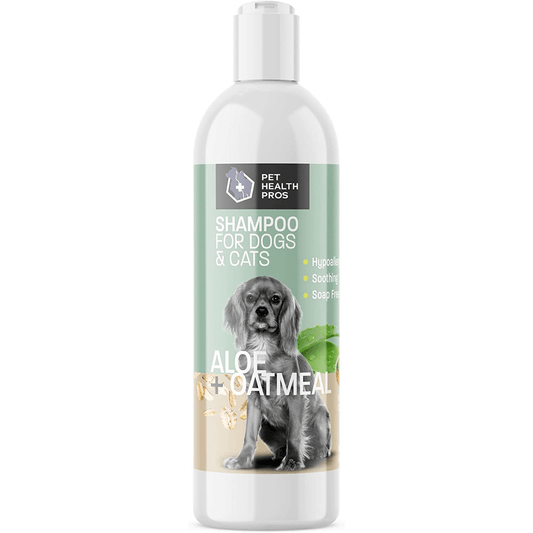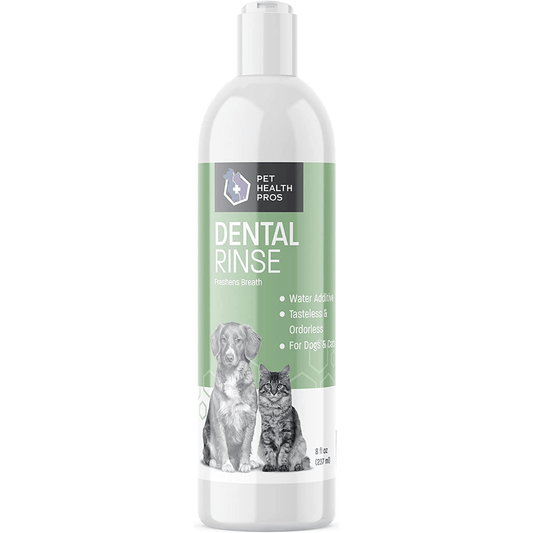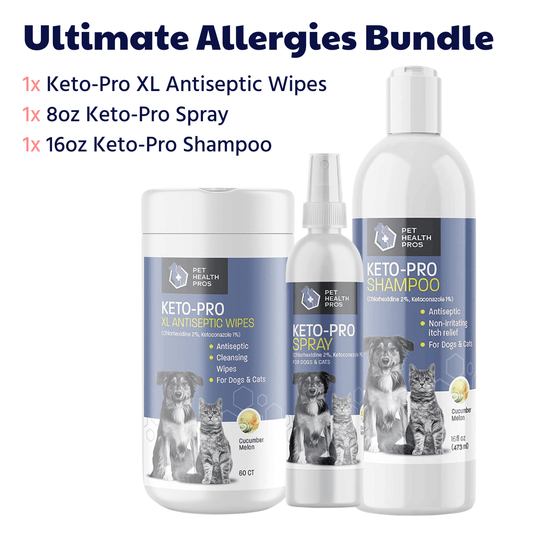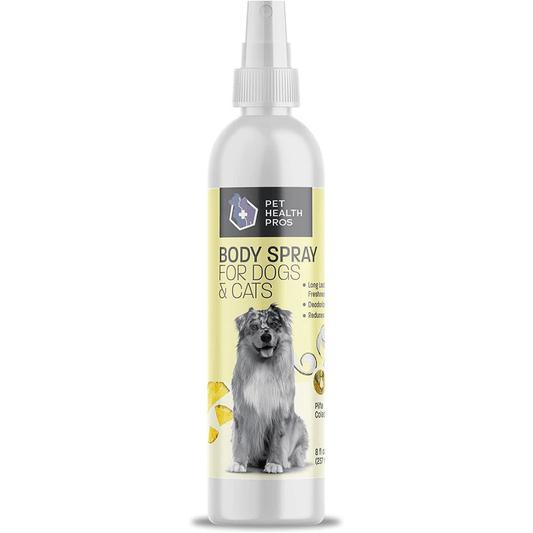Neosporin is a popular topical antibiotic used for minor wounds, but many dog owners wonder if it's safe and effective for their furry friends. In this guide, we’ll explore the benefits of using Neosporin for dogs, its applications, potential side effects, and best practices for wound care. Understanding how to properly care for your dog's injuries can make a big difference in their healing process.
Key Takeaways
- Neosporin can be used on minor cuts and scrapes in dogs.
- It's essential to monitor for any allergic reactions or skin irritation.
- Always consult with a vet if your dog has a wound that isn't healing.
- Alternatives to Neosporin include natural remedies and vet-prescribed treatments.
- Proper wound care includes cleaning, monitoring, and knowing when to seek professional help.
Understanding Neosporin For Dogs
What Is Neosporin?
Neosporin is a common over-the-counter topical antibiotic ointment. It's often found in human first-aid kits, and many pet owners wonder if it's okay to use on their dogs too. It usually contains three main active ingredients:
- Neomycin
- Polymyxin B
- Bacitracin
These ingredients work together to prevent bacterial growth, helping to heal minor cuts, scrapes, and burns. It's designed to be a broad-spectrum antibiotic, meaning it can fight off a range of different bacteria.
How Does Neosporin Work?
Neosporin works by attacking bacteria in a few different ways, thanks to its triple-antibiotic formula. Each ingredient targets bacteria differently:
- Neomycin interferes with the bacteria's ability to make proteins, which are essential for their survival.
- Polymyxin B disrupts the bacterial cell membrane, causing the cell to leak and eventually die.
- Bacitracin also interferes with cell wall synthesis, preventing bacteria from growing and multiplying.
Together, these antibiotics create a powerful defense against infection, preventing bacteria from colonizing the wound and allowing it to heal properly. It's important to note that Neosporin is effective against bacteria, but it won't do anything for viral or fungal infections.
Is Neosporin Safe For Dogs?
Generally, Neosporin is considered safe for dogs in small amounts for minor cuts and scrapes. However, there are a few things to keep in mind. The biggest concern is that dogs will often lick the ointment off the affected area. While the ingredients themselves aren't highly toxic, ingesting too much can cause stomach upset, like vomiting or diarrhea. Also, some dogs may have an allergic reaction to one of the ingredients, particularly neomycin. It's always a good idea to monitor your dog closely after applying Neosporin and to prevent them from licking the area if possible. If you notice any signs of a reaction, like redness, swelling, or itching, stop using the ointment and consult your vet.
Common Uses Of Neosporin For Dogs
Treating Minor Cuts and Scrapes
So, your dog got a little too adventurous and ended up with a scrape? Neosporin might be just the thing. It's pretty good at keeping those small wounds from getting infected. I remember when Buster, my golden retriever, decided the rose bushes were a fun obstacle course. A few scratches later, and a dab of Neosporin helped him heal up in no time. Just make sure the wound is clean before you put it on!
Managing Skin Infections
Skin infections can be a real pain for our furry friends. Sometimes, it's just a small area that's red and irritated. Neosporin can be useful for these minor bacterial flare-ups. However, it's not a cure-all. If the infection seems to be spreading or doesn't improve after a couple of days, it's time to see the vet. They might need something stronger, like an antibiotic.
Preventing Infection After Surgery
After a surgery, keeping the incision site clean is super important. Neosporin can be a part of your after-care routine, but always check with your vet first. They'll give you the best advice on how to prevent infection and keep your dog comfortable. I know after Daisy's spaying, I was extra careful to follow the vet's instructions to a T. It made a huge difference in her recovery!
Application Guidelines For Neosporin
How To Apply Neosporin
Okay, so you've decided to use Neosporin on your dog. Great! But how do you actually put it on? First, make sure your hands are clean. You don't want to introduce more germs to the wound. Gently clean the affected area with mild soap and water. Pat it dry with a clean towel. Then, apply a thin layer of Neosporin to the wound. A little goes a long way. Try to prevent your dog from licking it off immediately. Distract them with a toy or a treat for a few minutes to let the ointment absorb a bit.
Frequency of Application
How often should you be slathering on the Neosporin? Generally, applying it two to three times a day is a good rule of thumb. You want to keep the wound covered, but you also don't want to overdo it. Keep an eye on the area. If it seems to be getting better, you might be able to reduce the frequency. If it looks worse, stick to the recommended schedule and maybe consider a vet visit. It's all about finding that sweet spot for dog wound care.
Signs of Improvement
So, how do you know if the Neosporin is actually working? Well, you should start to see some positive changes within a few days. Here's what to look for:
- Reduced redness and swelling
- Less discharge or pus
- The wound starts to close up
- Your dog seems less bothered by it
If you're not seeing any of these signs, or if things seem to be getting worse, it's time to call the vet. Sometimes, a simple cut needs more than just over-the-counter help. Don't wait too long, as untreated infections can become a bigger problem.
It's important to remember that Neosporin is not a miracle cure. It's a helpful tool for minor issues, but it's not a substitute for professional veterinary care. If you're ever unsure, it's always best to err on the side of caution and get your dog checked out.
Potential Side Effects Of Neosporin
Allergic Reactions
While Neosporin is generally considered safe, allergic reactions can occur in some dogs. It's not super common, but it's something to watch out for. The most common allergens are the antibiotic ingredients themselves: neomycin, polymyxin B, and bacitracin. Keep an eye out for symptoms like:
- Hives
- Facial swelling
- Difficulty breathing
- Intense itching beyond the application site
If you notice any of these signs, stop using Neosporin immediately and contact your vet. Seriously, don't wait on that one.
Skin Irritation
Sometimes, even if it's not a full-blown allergy, Neosporin can cause localized skin irritation. This might show up as redness, a rash, or even just increased itchiness right where you put the ointment. It's usually pretty mild, but it can still be uncomfortable for your dog. If you see any of these things, try washing the area gently with mild soap and water. If it doesn't get better in a day or two, or if it seems to be getting worse, give your vet a call.
When To Seek Veterinary Help
Most of the time, minor side effects from Neosporin will clear up on their own or with simple home care. But there are definitely times when you need to get a vet involved. Here's when to seek professional help:
- If you suspect an allergic reaction (hives, swelling, trouble breathing).
- If the skin irritation is severe or doesn't improve.
- If the wound seems to be getting worse despite treatment (increased redness, swelling, pus).
- If your dog develops a fever or seems lethargic.
Basically, if you're at all worried, it's always best to err on the side of caution and talk to your vet. They can give you the best advice for your specific dog and situation. Plus, they can rule out any other potential problems that might be going on.
Alternatives To Neosporin For Dogs
So, Neosporin isn't the only game in town when your dog has a boo-boo. There are other options you can explore, depending on the type of wound and how comfortable you are with different treatments. Let's look at some alternatives.
Natural Remedies
Okay, so maybe you're into the whole natural thing. That's cool. There are some natural remedies that people use for minor cuts and scrapes on their dogs. Just remember, what works for one dog might not work for another, and it's always a good idea to chat with your vet before trying something new.
Here are a few natural options:
- Honey: Some people swear by honey for its antibacterial properties. You can apply a thin layer to the wound.
- Aloe Vera: Good for soothing minor burns and skin irritations. Make sure it's pure aloe vera, with no added junk.
- Calendula: This is an herb that's supposed to help with skin healing. You can find it in creams or ointments.
Just a heads up: natural doesn't always mean safe. Some essential oils, for example, can be toxic to dogs. Always do your homework.
Veterinary Prescriptions
Sometimes, you need the big guns. If your dog's wound is looking nasty, or if it's just not healing, it's time to call the vet. They might prescribe something stronger than Neosporin.
Here are some things your vet might prescribe:
- Antibiotic Ointments: Stronger than over-the-counter stuff, these can knock out infections pretty quick.
- Oral Antibiotics: If the infection has spread, your dog might need pills.
- Pain Medication: Because nobody wants their furry friend to be in pain.
Over-the-Counter Options
If you want something a little stronger than natural remedies but don't want to go straight to the vet, there are some over-the-counter options you can try.
- Betadine: This is an antiseptic that can help clean wounds. Dilute it properly before using it on your dog.
- Chlorhexidine: Another antiseptic wash that's good for cleaning wounds. You can find it at most pet stores.
- Silver Sulfadiazine Cream: This is an antibacterial cream that's often used for burns, but it can also be used for other types of wounds. You'll likely need a prescription, but it's worth asking your vet about.
Best Practices For Dog Wound Care
Cleaning the Wound
Okay, so your dog has a cut or scrape. First things first: you gotta clean it. I usually start by trimming the hair around the wound, if there's a lot of it. This helps keep the area clean and lets you see what you're dealing with. Then, gently flush the wound with lukewarm water or a saline solution. Avoid using harsh soaps or hydrogen peroxide, because those can actually damage the tissue and slow down healing. Pat the area dry with a clean cloth.
Monitoring for Infection
After you've cleaned the wound, keep a close eye on it. Infection is the enemy here. Look for signs like:
- Increased redness or swelling
- Pus or discharge
- Foul odor
- Pain or tenderness
If you notice any of these, it's time to call the vet. Don't wait, because infections can get serious fast. Also, try to keep your dog from licking or scratching the wound. Easier said than done, I know, but it's important.
When To Consult a Veterinarian
Sometimes, you just can't handle it on your own, and that's okay! Here's when I'd say it's time to get a professional involved:
- Deep or large wounds
- Wounds that won't stop bleeding
- Wounds that show signs of infection
- If the wound is located in a sensitive area (like near the eyes or mouth)
- If your dog is in a lot of pain
Basically, if you're unsure or worried, it's always best to err on the side of caution and get your dog checked out by a vet. They can give you the best advice and treatment options for your furry friend.
Neosporin Myths And Misconceptions
Common Misunderstandings
There are a lot of things people think they know about Neosporin, but not all of it is true. One common one I hear is that Neosporin is a cure-all for any skin issue on dogs. It's not. It's really meant for minor cuts, scrapes, and abrasions. Thinking it can handle serious infections or deep wounds is just wrong and can delay proper treatment. Also, some people believe that more is better. Nope! Overusing Neosporin can actually lead to antibiotic resistance, which is a big problem. Just a thin layer is all you need.
Fact vs. Fiction
Let's set the record straight on some common Neosporin beliefs:
-
Myth: Neosporin is effective against fungal infections.
- Fact: Neosporin is an antibacterial ointment, not an antifungal. It won't do anything for fungal issues.
-
Myth: It's okay for dogs to ingest Neosporin.
- Fact: While a tiny amount probably won't cause major harm, it's not meant to be eaten. Keep it away from their mouths.
-
Myth: Neosporin is a substitute for veterinary care.
- Fact: For minor stuff, it can help. But if the wound is deep, infected, or not healing, a vet visit is a must.
It's easy to fall into the trap of believing everything you read online, but when it comes to your dog's health, always double-check the information. Don't just assume something is safe or effective without doing a little digging or talking to a professional.
Expert Opinions
Veterinarians generally agree that Neosporin can be a useful tool in a dog owner's first-aid kit. However, they also stress the importance of using it correctly and knowing when to seek professional help. Dr. Emily Carter, a local vet, says, "Neosporin is fine for superficial wounds, but I often see owners using it on things that need more serious intervention, like deep puncture wounds or abscesses." She also points out that some dogs can have allergic reactions to the ointment, so it's always a good idea to test a small area first. The consensus? Neosporin is a helpful aid, not a replacement for good veterinary care.
Many people have misunderstandings about Neosporin. Some think it can cure everything, while others believe it’s only for minor cuts. In reality, it’s important to know how to use it correctly. If you want to learn more about the truth behind Neosporin and clear up any confusion, visit our website for detailed information!
Final Thoughts on Using Neosporin for Dogs
In summary, Neosporin can be a handy tool for treating minor wounds on your dog. It helps prevent infections and promotes healing, which is great for those little scrapes and cuts they might get while playing. Just remember, it’s not a substitute for vet care, especially for serious injuries. Always check with your vet if you're unsure about using it or if the wound looks bad. Keeping your dog healthy and happy is the goal, and knowing how to use Neosporin safely can be part of that.
Frequently Asked Questions
Can I use Neosporin on my dog?
Yes, you can use Neosporin on your dog for minor cuts and scrapes, but make sure to follow the right guidelines.
Is Neosporin safe for dogs?
Neosporin is generally safe for dogs, but some dogs may have allergic reactions. Always check with your vet first.
How do I apply Neosporin to my dog's wound?
First, clean the wound gently. Then, apply a small amount of Neosporin and cover it if needed.
How often should I apply Neosporin to my dog?
You can apply Neosporin 1-3 times a day, but watch for any signs of irritation.
What should I do if my dog has a bad reaction to Neosporin?
If your dog shows signs of a bad reaction, like swelling or itching, stop using it and contact your veterinarian.
Are there alternatives to Neosporin for dogs?
Yes, there are natural remedies and vet-prescribed options that can also help with dog wounds.








